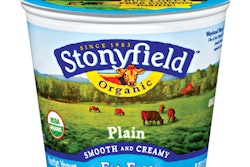packworld.com/webonly-28650
Coca-Cola’s numbers also soared with Greener Package Awards judges, who put them in one of the top spots in the Food & Pharmaceutical Packaging category. Says judge Sharon Reiter Lindberg of Unilever North America, PlantBottle is “a totally innovative way to envision the bottles of the future and deserves an A+ in sustainable initiatives in packaging.”
The key to the PlantBottle’s innovation is that it is “the first commodity resin partially derived from plants that is fully recyclable in community programs,” relates Mike Schultheis, Coca-Cola team lead for Sustainable Packaging Design. The bottle, constructed of 100% PET, uses monoethylene glycol (MEG) derived from plants for 30% of its content. In an early Life Cycle Assessment of the PlantBottle, data showed that even with an un-optimized supply chain, it provided a 10% to 20% improvement in material carbon footprint over petroleum-derived PET bottles.
The PlantBottle’s renewable portion is currently sourced from Brazilian sugarcane-derived ethanol, which is classified as an “Advanced Bio-Feedstock” by the EPA. According to Vitters, work is now underway on the next generation of PlantBottle, which will use instead a feedstock made from cellulosic ethanol, or plant waste-produced ethanol, as it becomes available.
Coca-Cola’s “North Star,” says Vitters, is to have 100% of the new resin purchased contain up to 30% plant-based material by 2020. Key to this journey, he relates, will be the company’s efforts at building the supply chain and expanding capacity for the material around the world.
“Our ultimate North Star,” Vitters adds, “is to be able to completely replace petroleum-based plastic resins used for bottles with plant-based materials that don’t compete with food crops and are 100% recyclable.” To this end, as Schultheis explains, Coca-Cola is investing resources and working with various research entities to support the development of a viable plant-based replacement for terephthalic acid, which makes up the remaining 70% of the PlantBottle.
“Because Coca-Cola is not a producer of any of these chemicals,” Schultheis says, “the challenge we face is making all the linkages with all the different parts of the supply chain.”
While developing the material technology for the PlantBottle has been one of Coca-Cola’s challenges, another has been educating stakeholders and consumers about the innovation and “why it offers the most meaningful environmental improvement potential for beverage bottles today and in the future,” reads the company’s Greener Package Awards entry form.
One learning Vitters cites since the launch of the package is that “plant-based” and “green” often connote compostability in many consumers’ minds. “There is this notion that maybe the better solutions are these magical resins that will just ‘Poof!’ disappear after use,” he says. “I think that is trying to solve a problem with the wrong solution. In the case of beverage packaging, you don’t want it to go ‘Poof,’ because there is the energy and material that went into making that to begin with that you want to reclaim and use again to further increase the environmental benefit.”
This ties into Coca-Cola’s commitment to recycling, which includes its “Give it Back” recycling campaign—the largest in the world, Schultheis says—its investments in material collection, and its development of six facilities worldwide for recycling curbside bottles back into food-grade PET.
Coca-Cola’s published goals are to recover 50% of its bottles and cans by 2015; 100% by 2020. “Lots of people are on sustainability journeys,” says Vitters. “But the journey needs to have a destination. Our destination is zero waste.”
The PlantBottle is currently being used in seven countries worldwide—Denmark, the U.S., Canada, Mexico, Brazil, Japan, and Norway—for a range of beverages and package styles, depending on market preferences. Vitters estimates that Coca-Cola is on track to double its current PlantBottle markets and volume in 2011.


























